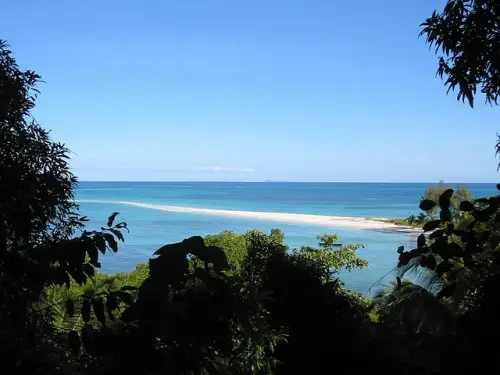How Much Is a Tourist Visa for Madagascar?
If you're planning to explore Madagascar’s incredible wildlife, beautiful coastlines, and rich culture, you’ll need to get your travel documents in order. One of the first questions travelers often ask is, “How much is a tourist visa for Madagascar?” In this guide, we’ll walk you through the visa costs, different types, and the application process, including online applications and visa on arrival.
Key Features of the Madagascar Tourist Visa
- Visa options are available for 15, 30, and 60 days.
- Accessible via online application or Visa on Arrival at major airports.
- Fees vary depending on the length of stay, but those are budget-friendly.
- Accepted payment currencies: USD, EUR, and Malagasy Ariary (MGA).
- The evisa system simplifies travel preparations and saves time.
- Possible to extend your visa once inside Madagascar.

Visa Options: eVisa or Visa on Arrival?
Travelers have two easy options for getting their Madagascar tourist visa. Those are:
Visa on Arrival
With this option, you can get your visa right at the airport when you arrive in Madagascar. Just fill out a short form and pay the fee in cash, USD, EUR, or local currency (MGA), which are all accepted. Once that’s done, your passport will be stamped, and you’re good to go.
Madagascar eVisa
The electronic visa (eVisa) allows travelers to apply online before departure. You simply fill out an online form, upload your documents, and receive your approval via email. This typically takes 1 to 6 working days. This method reduces airport wait times and helps you feel prepared before you go.
Both visa types are single-entry and cost the same amount, depending on your intended duration of stay.
Tourist Visa Fees Based on Stay Duration
So, how much is a tourist visa for Madagascar? The answer depends on how long you plan to stay. Below is a breakdown of the official fees:
- 15 days or less: USD $69.99
- 16 to 30 days: USD $94.99
- 31 to 60 days: USD $119.99
Note: Visa fees may change slightly depending on exchange rates and the method of payment. If you're choosing the Visa on Arrival option, it's best to bring the exact amount in cash. This is especially important if you're arriving at a smaller airport where card payments might not be available.
Compare Your eVisa Durations and CostsEntry Requirements and What’s Included
The Madagascar tourist visa is a single-entry permit, which means you can only enter once per visa. If you leave the country and wish to return, you will need to apply for a new visa.
To be granted entry, you’ll need to present:
- A valid passport (with at least 6 months' validity beyond the arrival date).
- Proof of onward or return travel.
- Accommodation details or address of stay.
- Sufficient funds to cover your expenses during your stay.
- A yellow fever vaccination certificate (only if coming from a yellow fever endemic country).
If you decide to stay longer once you're in Madagascar, you can apply for a visa extension. Just head to the nearest immigration office to start the process. In most cases, extensions are granted for up to an extra 90 days.
Check Entry Requirements For Madagascar TravelStep-by-Step Guide to Applying for a Madagascar eVisa
If you’d rather have everything sorted before you land, then applying for the eVisa is the best option. Here’s how you can do it:
- 1. Visit the Madagascar eVisa portal.
- 2. Create an account and select your preferred duration of stay.
- 3. Upload a scan of your passport and a recent passport-style photo.
- 4. Pay the visa fee using a credit or debit card. Other online payment options are also accepted.
- 5. Receive the approved eVisa via email within 1 to 6 business days.
You’ll need to print a copy of your eVisa and carry it when you travel. Present your passport along with it when you arrive in Madagascar.
Plan Your Trip to Madagascar with an eVisaWhat to Expect When Choosing a Visa on Arrival
If you prefer not to deal with online forms, the Visa on Arrival is a safe and reliable alternative. It’s particularly useful for last-minute bookings. Here’s what to expect:
- Available at major international airports such as Ivato (Antananarivo) and Fascene (Nosy Be).
- Fill out a short arrival form provided by immigration officers.
- Pay your visa fee in cash (USD, EUR, or MGA).
- Get your passport stamped with the appropriate visa based on your planned stay
Visa on Arrival is a convenient option for travelers. However, it involves long queues, particularly during peak tourist seasons. For those seeking a faster entry process, the eVisa route remains a popular choice.
Explore More About Madagascar Travel NowTips and Final Notes
- Always double-check the validity of your passport before traveling.
- If you plan on exploring remote areas, keep a printed copy of your visa handy.
- Have local currency (Ariary) or small USD/EUR notes available for immigration and transportation.
- Travel insurance with medical coverage is highly recommended.
- The tourist visa does not permit employment or long-term study.